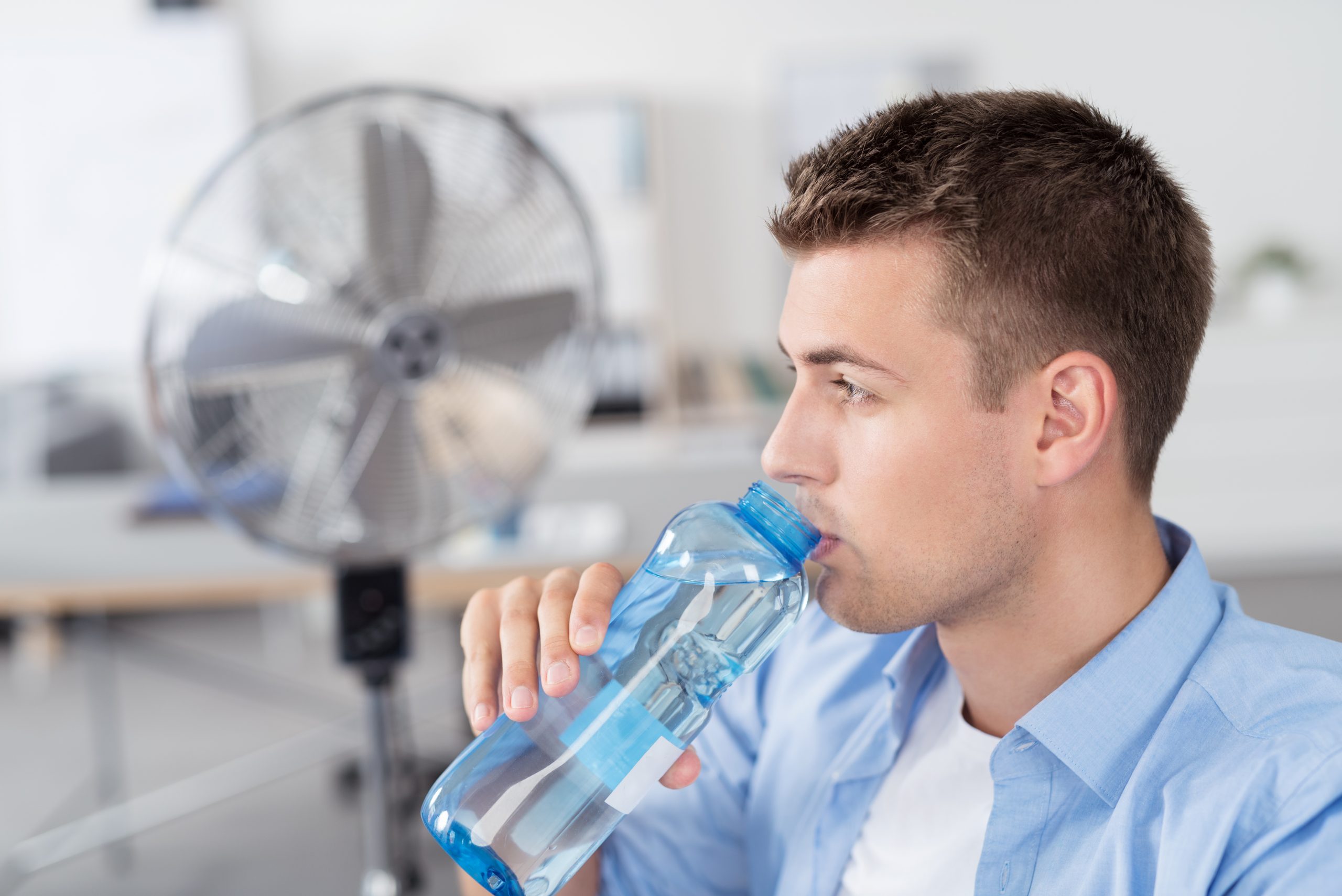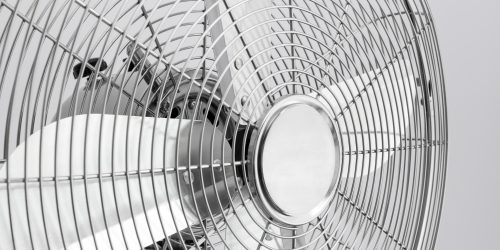How to equip your company to deal with working in a heatwave?
Although the heat may be welcome in some cases, working in a heatwave is not ideal as it can quickly become an ordeal for teams. Fatigue, drowsiness, headaches, demotivation – many of these symptoms can affect your staff’s productivity. In order to preserve their physical health and safety, working in a heatwave must be handled through specific measures that enable you to combat the intense heat while maintaining your company’s activity levels at the same time.
What does the law have to say about working in a heatwave?
With ongoing climate change, high temperatures and heat waves are becoming more and more frequent. But working in a heatwave can cause major problems for employees. It is essential, therefore, for companies to carefully manage their employees’ working conditions in order to not expose them to health risks.
When does it become a heatwave?
A heatwave is defined as a period of heat lasting at least 3 consecutive days with abnormally high temperatures during the day and night. Temperatures are assessed according to regional averages, but the competent authorities generally consider it to be a heat warning when the temperature exceeds 30 to 35°C during the day (and 18 to 20°C at night).
What are an employer’s obligations if there is a heatwave?
The regulations about working in a heatwave are based on European Directive 89/391/EEC, which sets out measures for the prevention of risks and protecting workers’ health and safety.
Beyond this directive, employment law varies from country to country. This is why it is important for each company to find out about the national regulations in force.
At what temperature can employees exercise their right not to work?
From a temperature of 28°C to 30°C (depending on whether the employee has a physically active or sedentary job), work is seen as a risk to employee health. Above 33°C, it is no longer a risk but a danger.
The question is then at which temperature can workers exercise their right not to work? At present, there is no precise temperature above which an employee can refuse to work. However, they can refuse to work if they feel that their health is endangered by a significant rise in temperature.
Work in a heatwave: Precautionary measures
Several types of precautions can be taken to protect employees when they are working in a heatwave. The right of employees to have access to specific equipment and facilities enables
them to work in sustainable conditions and guarantees their health and safety. This means work can continue during a heatwave, but only if a few recommendations are followed.
Adjust working time
If the business allows it, working hours must be adapted to these extreme weather conditions. The arrival and departure times can thus be offset to capitalise on cooler time slots. The number of breaks can be increased to allow employees to cool down regularly and lower their body temperature. Well-being at work increases teams’ productivity tenfold, and this is even more true during hot periods.
Provide fresh drinking water

For physical jobs or jobs where workers can particularly feel the heat (e.g., the construction industry), the employer should provide fresh water. Each employee is entitled to at least 3 litres of fresh water per day. They can also be provided with misters so that teams can cool down whenever they wish to do so, particularly during heat waves.
Renew the air regularly
The air must be renewed regularly in closed rooms. The first few hours of the day, when the temperature has not yet reached its peak, are ideal for filling rooms with fresh air. From a certain time of day onwards, however, opening windows is counterproductive and may increase the feeling of heat. Whenever possible, blinds should be kept down even when windows are open to reduce glare, especially in areas exposed to direct sunlight.
Inform employees of the risks
The employer must raise awareness and inform the teams of the risks to their health and safety caused by high temperatures. This information and training work must enable people to identify potential warning signals (headaches, dehydration, accelerated heart rate) and to respond quickly if there’s a health issue (call the emergency services, cool the person down, etc.).
The employer must inform employees about the actions taken (provision of water points, ventilation devices, adjustment of working hours) and also provide preventive health advice to the employees (regular hydration, turning off non-essential heat-generating electrical appliances, avoiding heavy meals).
Switch to remote working

Since the health crisis, working from home has become more widespread in companies. When the workplace becomes a real furnace, switching to remote working is a great alternative.
Employees are advised to vacate the premises when the temperature exceeds 34 °C. As working from home has become more commonplace, procedures are smoother now, and employers’ previous worries about a dip in productivity seem to have eased. This means working in a heatwave is possible without negatively impacting the company’s activity.
Working from home on hot days means employees can avoid having to use crowded public transportation which, in periods of strong heat, is particularly uncomfortable, as the ventilation systems of certain means of transport are not always able to cope with it.
Working in a heatwave: Equipment to protect employees against the heat indoors
In addition to the preventive measures taken to combat heatwaves at work, there is now a range of equipment available to reduce the heat and provide a tolerable working environment for employees.
Anti-heat interior and exterior blinds
Blinds should make it possible to decrease the effect of solar radiation on windows, especially when these are quite old, poorly insulated, and do not provide enough protection from exposure to the sun’s rays.
Windows with UV protection film can also be provided or, even better, for the owners of the premises, existing windows can be replaced by new ones with UV protection glazing, especially in areas frequently exposed to solar radiation. Sun exposure is reduced by up to 80% compared to conventional glass. The temperature is considerably lowered, as is energy consumption.
Fans
Fans can be used to ventilate and renew the air when the temperature rises. Mini-fans have the advantage that they can be used in a way that is suited to each individual’s needs, as the perception of warmth can vary greatly from one person to another.
However, when the temperature becomes too high, these are no longer enough to ensure good ventilation, and other solutions must then be sought by the employer to improve working conditions. These may include:
- Standing fans;
- Tabletop fans;
- Standing fans with adjustable height and multiple ventilation levels;
- Column fans (for 180 °C air circulation);
- Bladeless fans (powerful, elegant, and very energy-efficient);
- Fan guns (which remove hot air);
- Ceiling fans.
Air conditioners
Mobile air conditioners are a very effective temporary solution for bringing the temperature down immediately on company premises. Despite costing more, they are specifically adapted to periods of hot weather and have the advantage of not generating any particular constraint or additional installation costs.
Air humidifiers
In periods of extreme heat, employees can experience a lack of air that is both unpleasant and potentially dangerous for their health. A humidifier that expels cool steam helps to
improve the room’s atmosphere and keep teams safe. They can breathe more freely, even in the heat of the day.
Heatwaves and working outside: Equipment to protect employees
Teams working outdoors are particularly exposed to heatwaves. To protect them, the employer must make certain equipment available to them. The employer must always provide an area designed for heatwaves, because employees can take shelter there if there is intense heat and seek shade, particularly during their breaks.
Worksite trailers fitted out for them also enable them to take showers regularly in order to lower their body temperature.
Lastly, mobile misting fans specially designed for outdoor work can be used, among other applications, to cool employees down and thus avoid heat stroke.
Safety at work and heatwaves are no longer incompatible if you get the right equipment and follow the proper recommendations. However, you must always stay away from your employees’ working conditions and plan ahead for hazards related to temperatures getting too high.
Discover our range of summer products in our summer shop.






